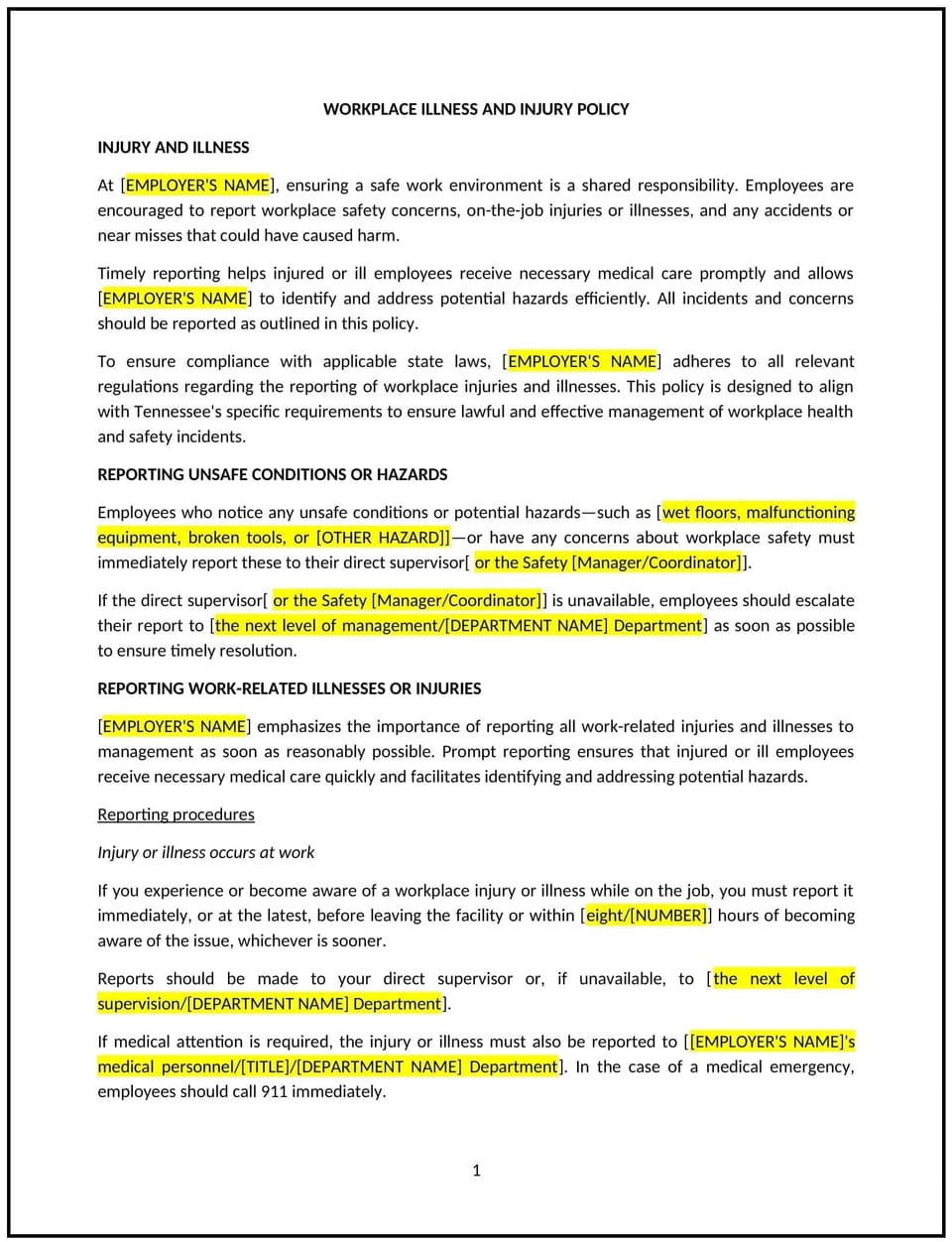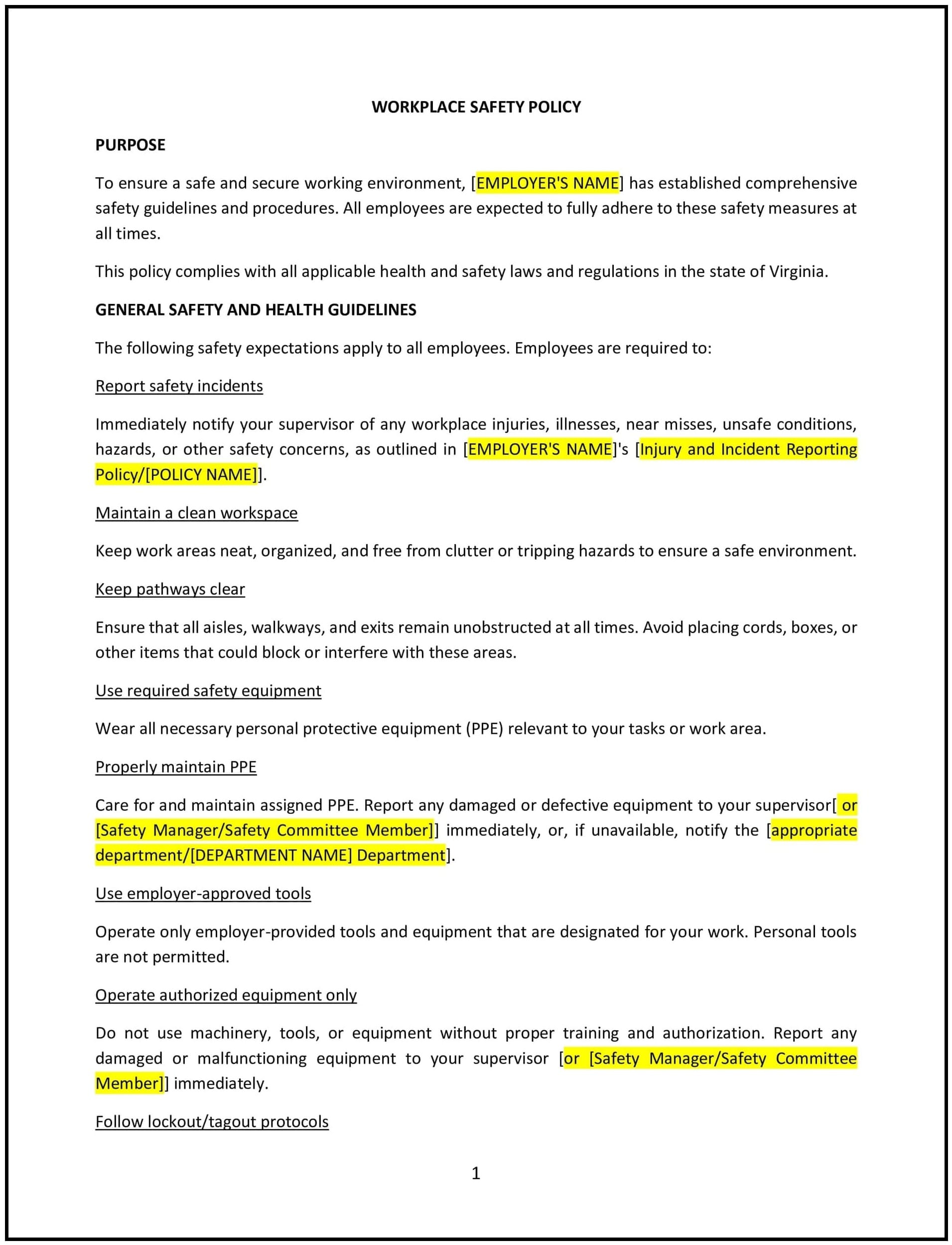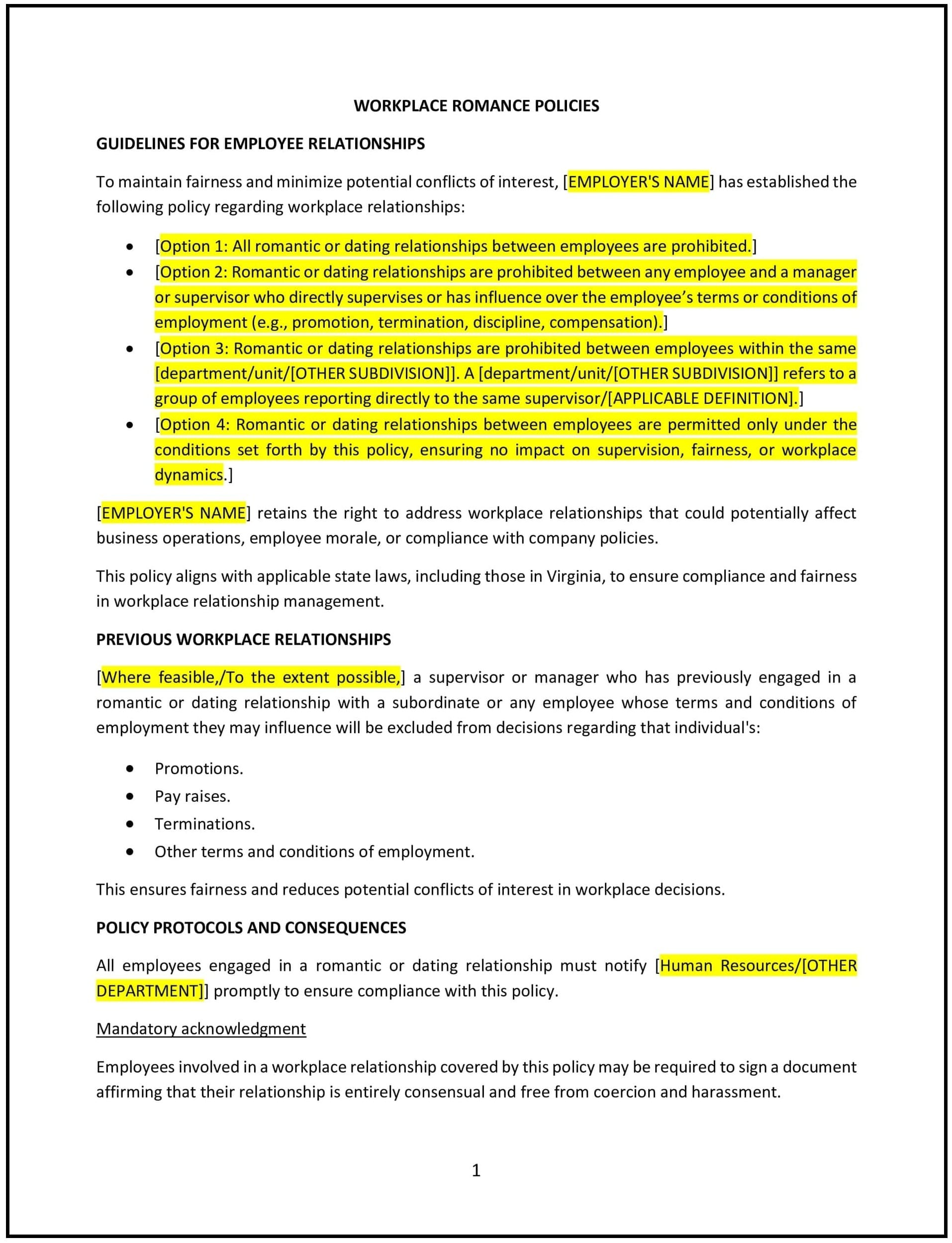Workplace illness and injury policy (Tennessee): Free template

Workplace illness and injury policy (Tennessee)
This workplace illness and injury policy is designed to help Tennessee businesses address employee health and safety concerns. It outlines procedures for reporting, responding to, and preventing workplace illnesses and injuries.
By adopting this policy, businesses can promote employee well-being, reduce risks, and maintain a safe work environment.
How to use this workplace illness and injury policy (Tennessee)
- Define reporting procedures: Provide steps for employees to report illnesses or injuries, including required documentation and timelines.
- Outline response protocols: Specify how the business will respond to reported incidents, including medical care and investigations.
- Establish preventive measures: Include strategies such as safety training, ergonomic assessments, and health screenings.
- Train employees: Educate employees on recognizing hazards, reporting incidents, and following safety protocols.
- Review and update: Assess the policy annually to ensure it aligns with evolving business needs and safety standards.
Benefits of using this workplace illness and injury policy (Tennessee)
This policy offers several advantages for Tennessee businesses:
- Promotes employee well-being: Supports employees in maintaining their health and safety at work.
- Reduces risks: Helps prevent workplace illnesses and injuries, minimizing potential liabilities.
- Enhances productivity: Encourages employees to focus on their work in a safe and healthy environment.
- Builds trust: Demonstrates a commitment to employee safety and well-being.
- Supports reputation: Positions the business as a responsible and safety-conscious employer in the community.
Tips for using this workplace illness and injury policy (Tennessee)
- Communicate the policy: Share the policy with employees and include it in the employee handbook.
- Provide training: Educate employees and managers on recognizing hazards, reporting incidents, and following safety protocols.
- Monitor incidents: Regularly review reported incidents to identify patterns and address potential risks.
- Address issues promptly: Take immediate action to investigate and resolve reported illnesses or injuries.
- Update regularly: Assess the policy annually to ensure it aligns with evolving business needs and safety standards.
Q: How does this policy benefit businesses?
A: By addressing workplace illnesses and injuries, businesses can promote employee well-being, reduce risks, and enhance productivity.
Q: What types of incidents should be reported under this policy?
A: Employees should report any work-related illnesses, injuries, or near-miss incidents that could lead to harm.
Q: How should businesses handle reported illnesses or injuries?
A: Businesses should provide immediate medical care, investigate the incident, and take corrective action to prevent future occurrences.
Q: Can businesses implement preventive measures to reduce workplace illnesses and injuries?
A: Yes, businesses can implement measures such as safety training, ergonomic assessments, and health screenings.
Q: How often should businesses review this policy?
A: Businesses should review the policy annually or as needed to ensure it aligns with evolving safety standards and business needs.
This article contains general legal information and does not contain legal advice. Cobrief is not a law firm or a substitute for an attorney or law firm. The law is complex and changes often. For legal advice, please ask a lawyer.


